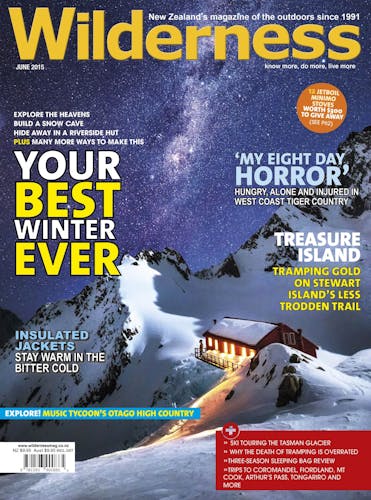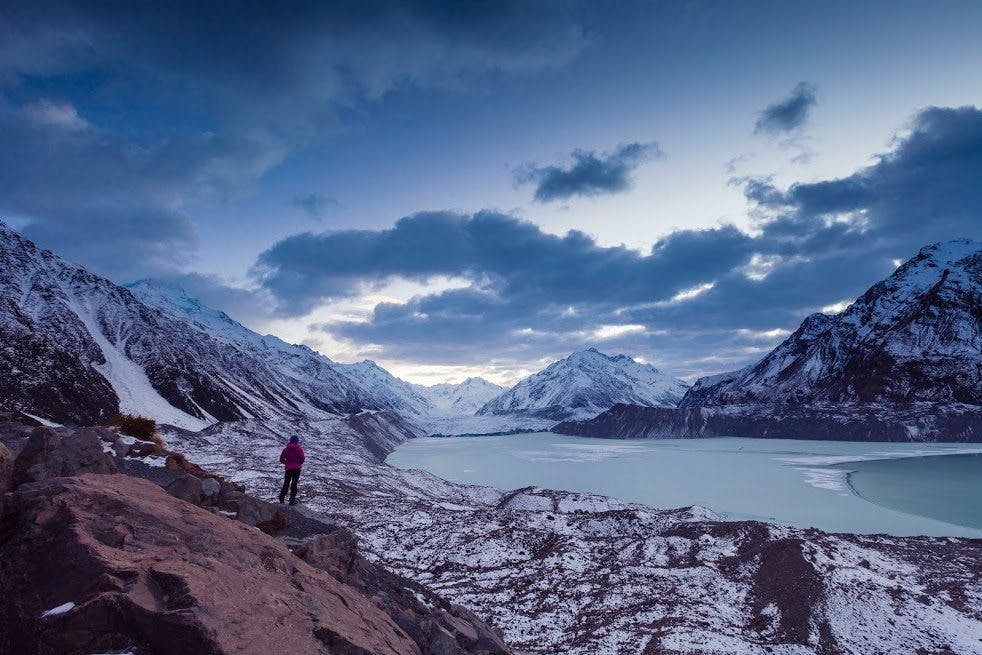Winter is often mistaken for the off-season when it comes to tramping. It needn’t be. We’re all familiar with New Zealand’s frigid climate and the shudder that comes with putting together the words ‘June,’ ‘July’ and ‘August’ with ‘outdoors’. But with planning and a good sense of adventure, you may find that winter serves up more rewards than you’d expect. You could even end up having your best winter ever.
Do a winter photoshoot
You don’t have to be a professional photographer to get a kick out of capturing our country’s winter glory. Crisp, still mornings, with snow-capped mountains and streaks of orange sunlight are perfect. But, New Zealand winters are harsh, mean affairs. A powerful photo could be a portrait of someone striding through the mist, leaning into a southerly, rain lashing their red face. Or it could be a tree tortured by a gale, rain pelting the hut window, tents flattened by a gale. Writer Steve Braunias summed things up when he wrote of the cabin-fever that grips us as we rug up indoors against the beast.
‘All this,’ he writes in his 2001 book, Fool’s Paradise, ‘is winter as it should be. It wants to pick a fight. Heartless, profound, desolate, the loneliest, most harrowing time of the year, a stern and resolute authority, sick of living. The kind of winter that sounds the hard, clanging bell, and we all hear it, we all know what it means.’
Wait for your local hills to get a dump
Weather systems in New Zealand follow patterns and in winter most of those pattens involve a liberal splattering of snow. ‘Cold front’ is a phrase known only too well. We see the jagged-toothed serpent on the weather maps, tailing shockingly compressed isobars, and the last thing we want to do is head for the hills.
But what we forget is that sunny days often follow the cold front, and they reveal the gifts that the front brought: fluffy snow, and a freshly-scrubbed and repainted landscape. As the anti-cyclone moves away it’s time to get outdoors, and you don’t necessarily have to go far. Your local hills may have received a dusting.
Growing up in Porirua, we would occasionally get of snow in Belmont Regional Park or Colonial Knob. The Christchurch Port Hills have long mastered the art. How glorious it is to walk these minor bumps, usually rolling farmland, and sink your shoes into the novelty of snow. Your local hills are finally playing with the big kids..
The next day the snow is gone, the northerly stiffens and the daily plod continues…until the next cold front.
Hermit in a riverside hut
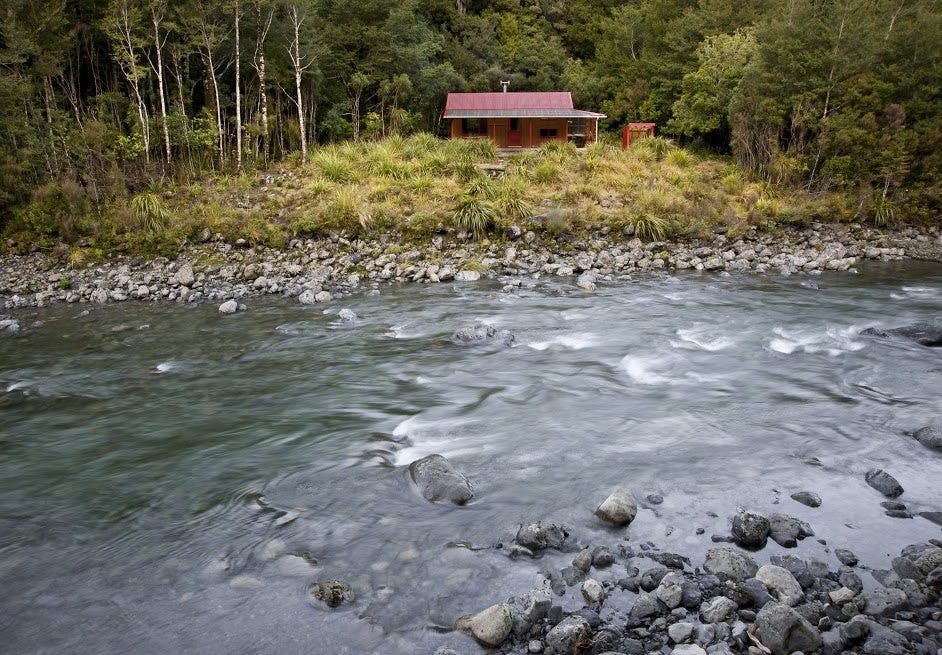
Roaring Stag Lodge in the Tararuas makes a great hideaway hut. Photo: Shaun Barnett
When the stresses of life threaten over the long winter, it may be time to spend a couple of nights in a wet, hidden valley. In comfort, of course. Riverside huts are great in summer, with clothes drying in the sun, swimming holes, long, warm evenings. But they take on a special, and very different characteristic in winter. They become humble, introspective places of quiet refuge. Set amongst the green, dripping bush, their roofs drain the rain, the door is shut and the fire is stoked. No one will find you here.
These huts have all the ingredients for a perfect pit day, or two. Card games, a boiling billy on repeat, books, conversation, food, a fluffy sleeping bag, rat bait in the corner, Wilderness magazines in a cardboard box; this is the staple diet of a winter riverside hut. You can listen to the river surge as you go nowhere in a hurry. The rain knocks on the window but it can’t get in. The night pulls down the shades swiftly.
You’ll get wet on the way in and you’ll get wet on the way out. Watch for rising rivers. Do your research and for heaven’s sake make sure your hut has a fire. The Ruahines have some beauties: Daphne, Waterfall, Maropea Forks.
Learn to build a snow cave
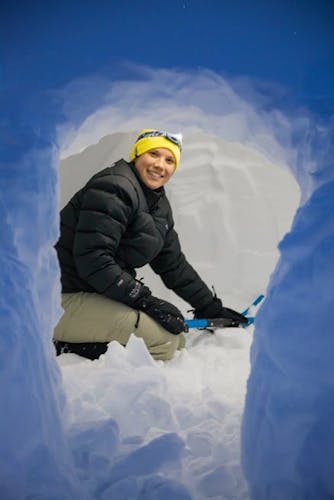
Knowing how to build a snow cave is a handy skill. Photo: Lee Rentz
Learning the skills to build a snow cave is a good idea for anyone who spends time about the bushline. It’s fun and challenge and it could save your life. Why not learn how this winter?
Snow is an unusual building material and you need to know what you’re doing. But once built, a snow cave can be remarkably comfortable. In 2012, Blair Whitaker spent a month in a snow cave at Remarkables Ski Field as a fundraiser for Aspiring Avalanche Dogs. His was a luxury model, featuring a bench for his gear, a bench to sleep on and a small side-room for his portable toilet.
But it’s for their ability to save lives that snow caves are truly valued. They’re quick to build and snug – often a balmy 0℃ while the outside temperature plummets into negative territory.
In 1999, in the Snowy Mountains in Australia, four snowboarders died in a snow cave after a huge overnight dump asphyxiated them. They had made fatal errors in the construction of their cave and paid a tragic price.
Many alpine skills courses offer instruction on how to build snow caves and the knowledge of how to safely bivvy the night away gives confidence and enjoyment.
Go snowshoeing
No longer will you be waist deep in wondrous fresh powder, shaving energy whilst dragging yourself forwards. Strap on a pair of snowshoes and you’ll be literally walking on water (kind of). There’s a feeling of going back in time when you strap on snowshoes. The saying goes, ‘If you can walk, you can snowshoe.’ Long gone are the days when snowshoes resembled tennis racquets. Today’s modern versions have crampon-like soles to help you cross icy slopes, and televators that lift the heel on steep ascents.
Snowshoeing can open up a mass of previously inaccessible terrain and add substantially to your enjoyment, due to the ease of travelling. Places that receive liberal snow-dumps such as ski fields, Queenstown and the Southern Alps are ideal places to try them out, and there are companies who offer hire and a guided snowshoeing introduction.
Try ski touring
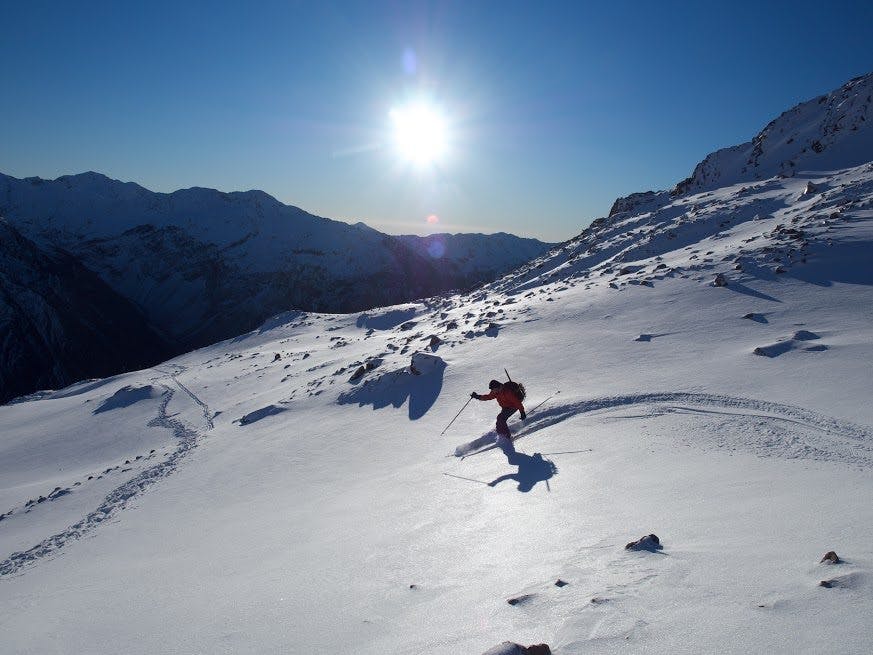
Give ski touring a go and you could find yourself off the groomed trail. Photo: Mitchell Everly
Next step is ski touring. If you’ve never tried it you may have the impression it’s a close relation to downhill skiing; an adrenalin-introducing speed thrill. It’s not. It’s closer to tramping than skiing. It’s slow and thoughtful. Quiet. And bloody hard work.
You’ll sweat and overheat climbing uphill in skis; something that is next to impossible with regular downhill skis. Boots are closer to tramping boots than ski boots, and only the toe-half of your foot is attached to the skis – at least for the uphills. This means your calves are free to extend and push you towards your goal.
With a bit of luck you’ll soon be covering ground with ease and getting places you’d never have time to reach by tramping or snowshoeing. Learning at a ski field is best, where you can skin to a summit high above the last chairlift for an unforgettably long run to the car. As experience is gained, a new world of backcountry skiing to places like Tasman Glacier open up to you.
Go camping
Why would anyone go camping in winter in New Zealand?
Well, winter camping means you avoid the crowds and should be able to choose the best spot at the campsite. No annoying neighbours, no queues for the showers or the kitchen, no superheated tent in the morning as the sun bakes you senseless. It’s perfect for escaping the claustrophobia of the house and getting a change of scenery.
Hopefully, you have a good tent, and can watch the rain from inside your waterproof awning, without getting wet. Children don’t care about rain and will happily splosh around outside in their raincoats and gumboots and have a great time, while you relax with a cuppa and a book and watch the trees bend in the wind. The long, dark evenings are perfect for board games and catching up on sleep.
Getting out of the hot shower in the morning might be impossible, though.
Climb a winter peak
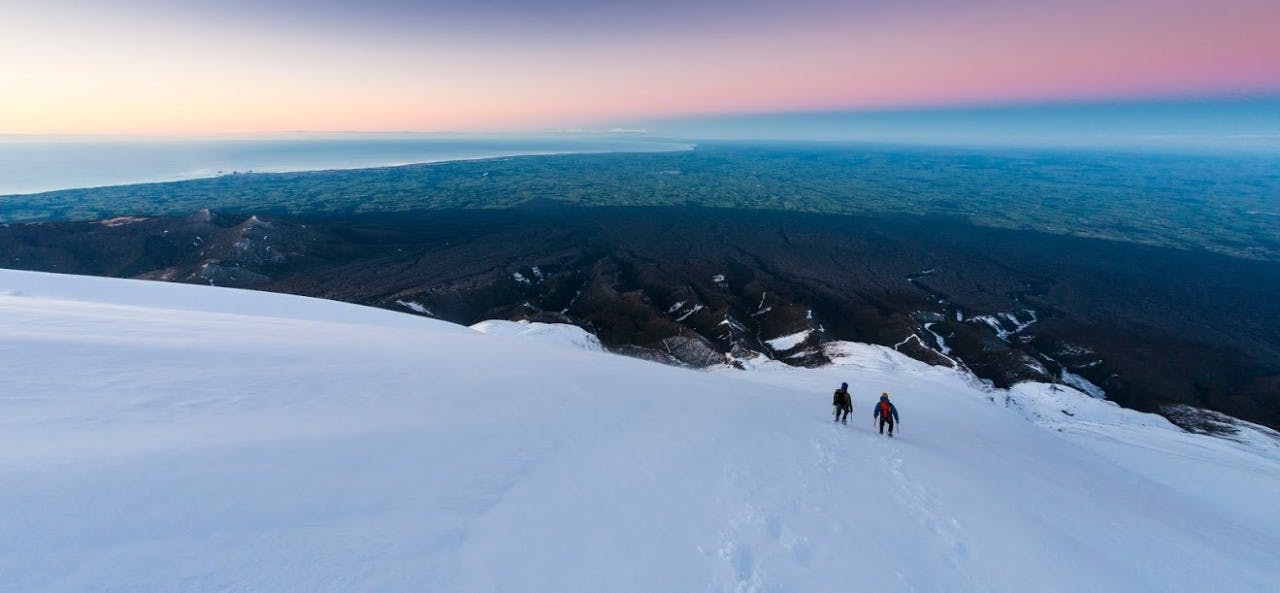
Mt Egmont/Taranaki is a great winter objective. Photo: Mark Watson
Winter is a great time for peak-bagging. Conquering a peak will always feel like more of an achievement when it’s snow-covered. That modest-looking knob you skipped up in summer takes on Himalayan-like proportions when doused in the white stuff. Landmarks are less pronounced, which can make navigation more difficult. Your legs will plod slower but your heart will beat faster. The mountain hides all identifying features: flowers, rocks, grooved tracks, mud, even colours, and becomes just the mountain. Snow poles earn their keep and compasses are called into action as the world around narrows its focus.
Pick a mountain depending on your skills, fitness and state of mind. Mt Egmont/Taranaki is great for testing ice axe and crampon skills, as are peaks in Arthur’s Pass such as Mt Murchison. But don’t forget your local ranges. A winter ascent of Mt Holdsworth in the Tararuas on a clear day is achievable by most and is unforgettable.
Whichever peak you choose, watch the weather, be wary of ice and be prepared to turn back if the conditions aren’t right.
Go for a wild winter coastal walk
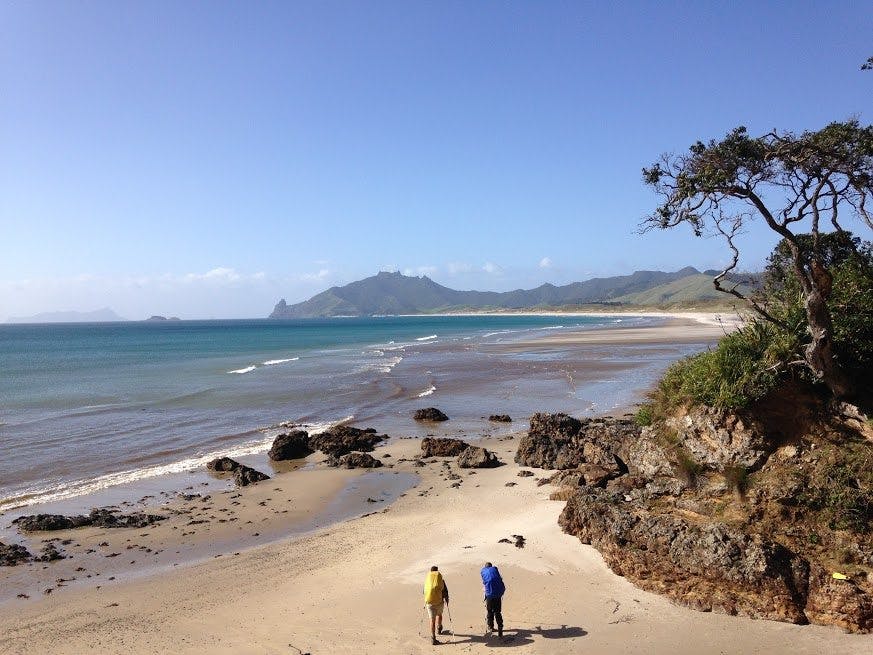
A wild coast contains a treasure trove of washed-ashore goodies. Photo: Kylie Lang
There’s something special about stepping along rocks on the edge of the country as the freezing wind bullies and the crashing waves lunge maniacally at you. Many New Zealand cities have perfect winter walking coastlines. It’s a good time to try out your warm clothes and any new waterproofs. It’s an all-weather activity. The wilder the better and you could meet some interesting wildlife: seals, migratory sea birds, even whales.
Children need a hearty constitution to endure the rigors of the cold and the wind, but the older ones will appreciate the outing, and discover surprises all along the journey. The coast is a giant recycling centre, offering all sorts of pre-loved treats deposited by the waves; anything from an old tyre to a car door to a mannequin’s head (I found all three in one afternoon).
As a child I loved collecting sea glass – hard to find these days with our preference for plastic and aluminium. Bringing home the glistening treasure of gold, green and amber pieces to add to my shoebox was always a winter highlight. As was watching the boats being tossed around off-shore, held aloft by the restless, moaning sea.
You leave the coast feeling as energised as the environment you’ve just been through. Infused with power, ready for anything.
Revisit a place you’ve known only in summer
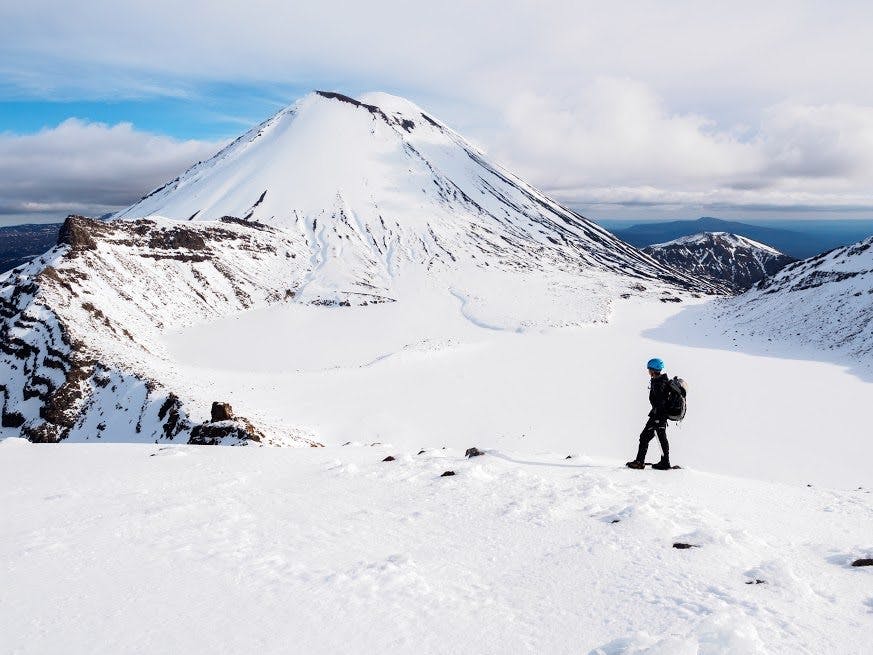
the winter wonderland that is Tongariro National Park – a completely different proposition to summer. Photo: Zhi Yap Yuen
Many of us have a place we return to over and over again. It could be a hut, a stretch of coastline, or a mountain. Often we will make annual pilgrimages and do the same things each year. For my family, it’s Parawai Lodge in the Tararuas. Most summers we will gather for a few nights and play Monopoly, cricket on the ‘sports field’ outside the hut, have night-time performances, make a fire outside and walk to our favourite swimming spot in the Otaki River, collecting interesting stones and painful sunburn on the way. Other people have a campground they go to every New Year’s Eve.
Winter could be the perfect time to revisit that special place and experience it in a completely new way. Vegetation changes. Snow hides things you’re used to seeing, but builds new opportunities for fun. You may need to reconfigure your activities. You may need different equipment. But chances are you’ll take away a pack-full of new memories and a novel appreciation of the place.
Do a Great Walk
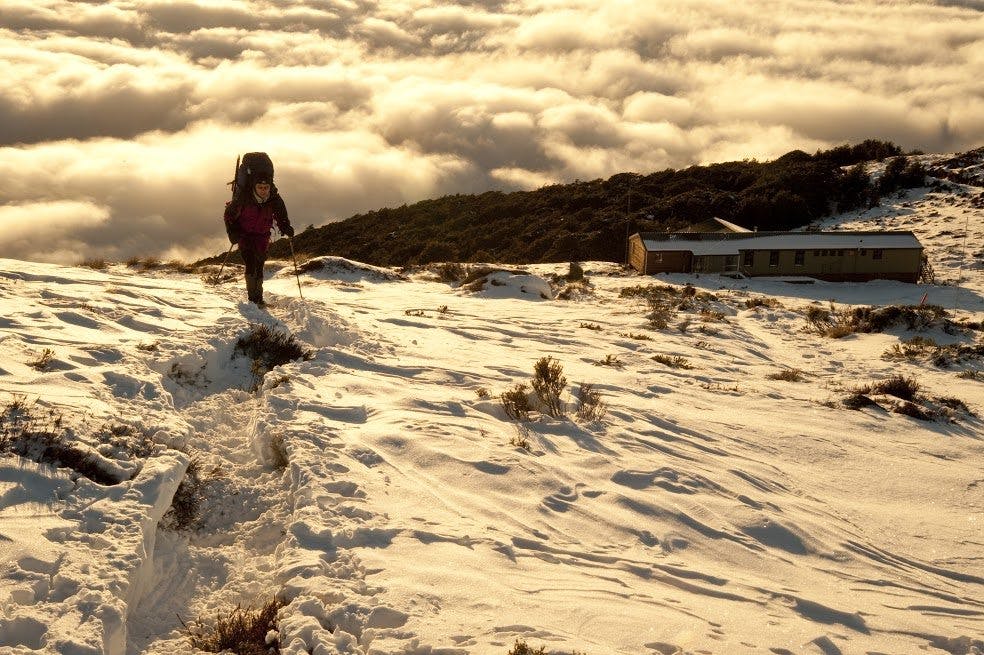
The Kelper Track in winter – yours and yours alone. Photo: Shaun Barnett
Yes, we’d be crazy to advocate joining the summer tourist trail along one of our popular Great Walks. But winter can be the perfect time to poke your head in and not have it knocked off by an unending parade of tanned oversea visitors.
The first time I walked the Tongariro Northern Circuit was summer. The second time it was winter. In winter we had the huts to ourselves; an unheard-of novelty on that walk. We looked across Central Crater and saw not an army of marching people, but a snow-speckled, shimmering and peaceful Mt Tongariro and Blue Lake, unadorned with the fruits of tourism marketing campaigns.
It’s times like these that you can actually appreciate the reasons these were made Great Walks and they can be yours alone.
Spend a romantic weekend in a hut
It must be said that huts are not instinctively romantic places. On arrival you’re usually hot, smelly, tired, hungry and dressed ridiculously. But it’s time to re-evaluate your preconceptions. A winter hut could be just the thing to impress that special person and make a weekend to remember.
For starters, nights are long in winter. In summer, night finally falls just as you’re climbing into your sleeping bag, zonked out from walking and eating and planning the next day’s activities. The hut is likely to be shared with others, some who retire before it’s even dark. But in winter a hut is the perfect couple’s hideaway. Get the fire going early, put on your most becoming woollen jersey, light a few candles and get out two bottles of wine; one empty for a candle holder and one soon to be emptied by the two of you. Prepare a meal that doesn’t require eating out of the bag it came in.
Take an alpine skills course
Learning a few basic alpine skills can open up new worlds. It can allow access to places previously thought inaccessible. But you do need expert help. Luckily, most alpine skills courses are run in winter. Think of it as pre-season training. At the very least it’s an investment in your future enjoyment of the outdoors. And it’s also great fun. You’ll learn so much more than how to swing an ice axe. Avalanche-awareness, route-finding, rope skills, safety on all types of snow and ice, how to tackle your favourite peak.
Go stargazing
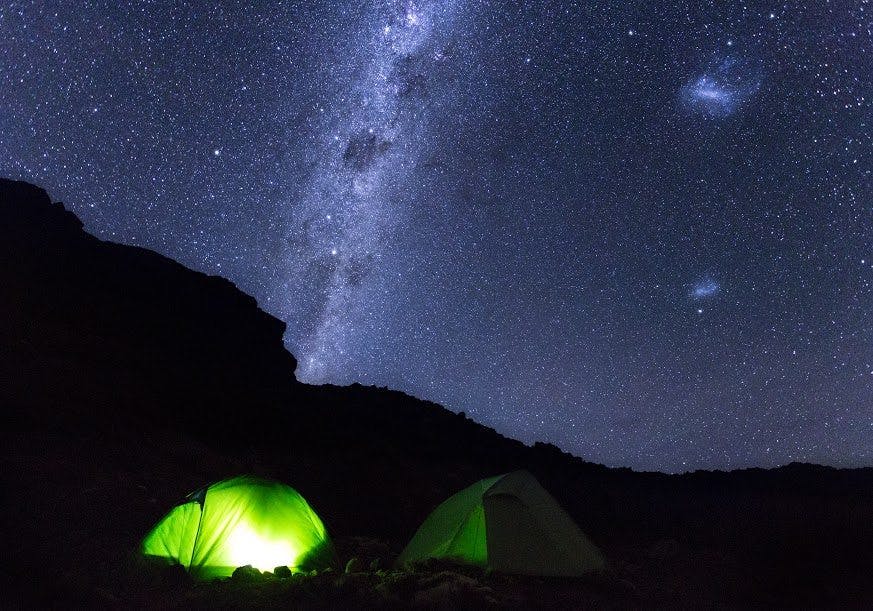
The winter night sky is a marvel. Photo: Joshua Windsor
The Milky Way is in all its glory in the Southern Hemisphere winter. Nights are longer, free of the lingering and overbearing summer sun.
By all means get outside wherever you are and look up; but for a proper, never-to-be forgotten night head to the Mackenzie Country and in particular Lake Tekapo and Mt Cook where you can enjoy the splendours of the night sky from New Zealand’s only Dark Sky Reserve. Here, light pollution is practically non-existent so your view of the heavens is as good as it gets.





